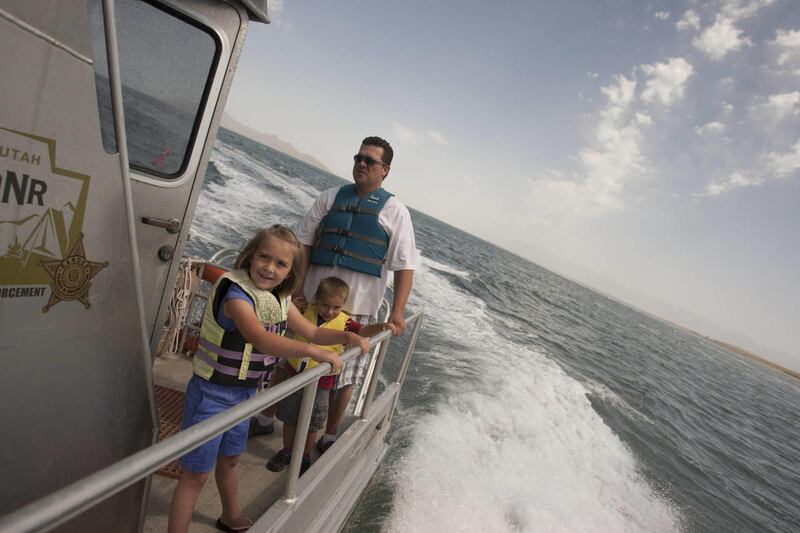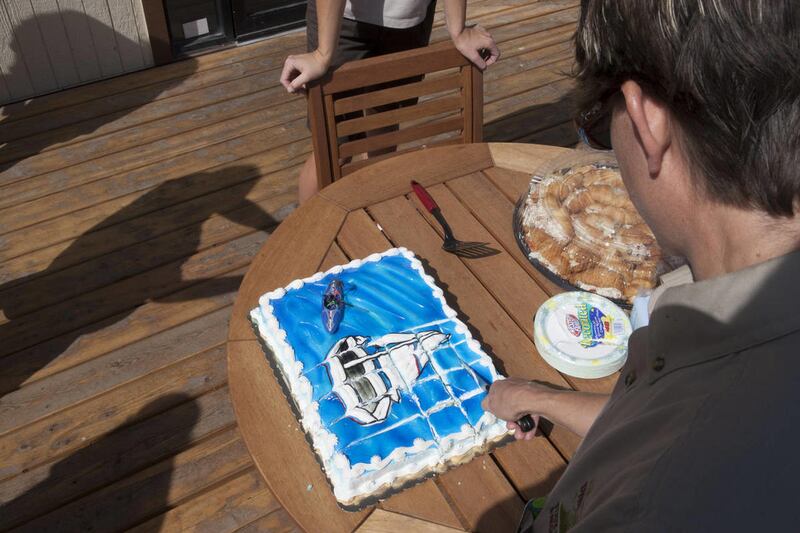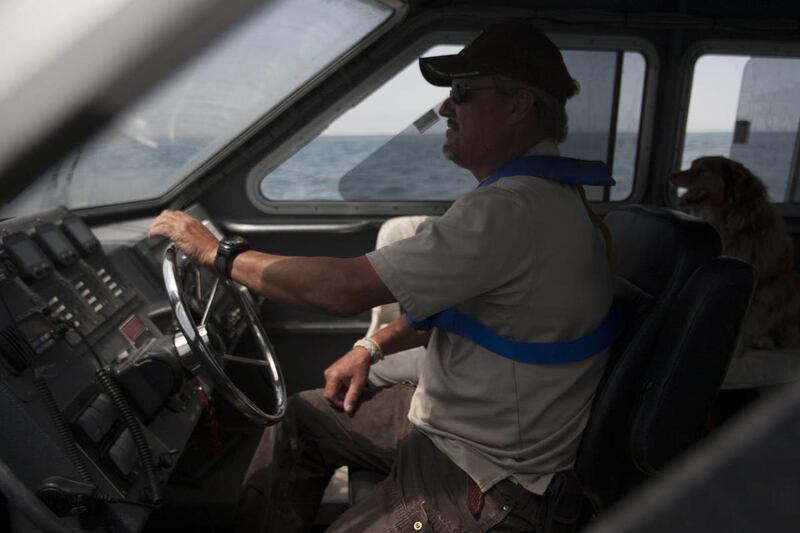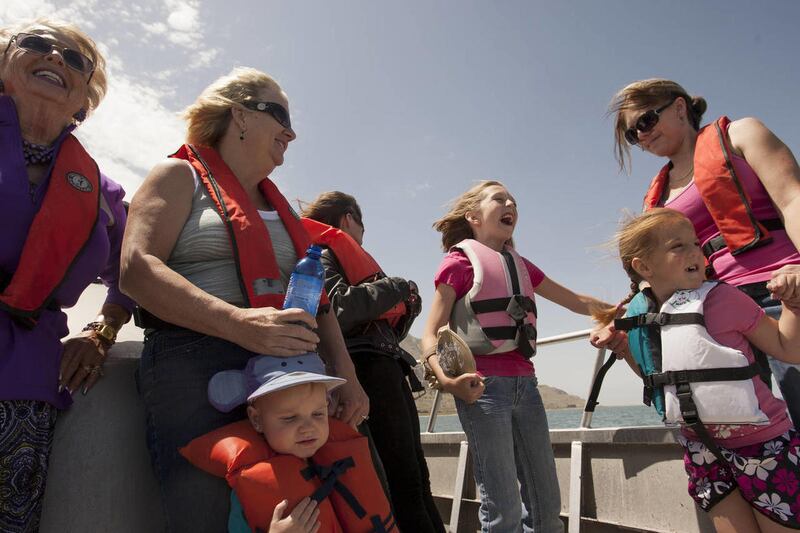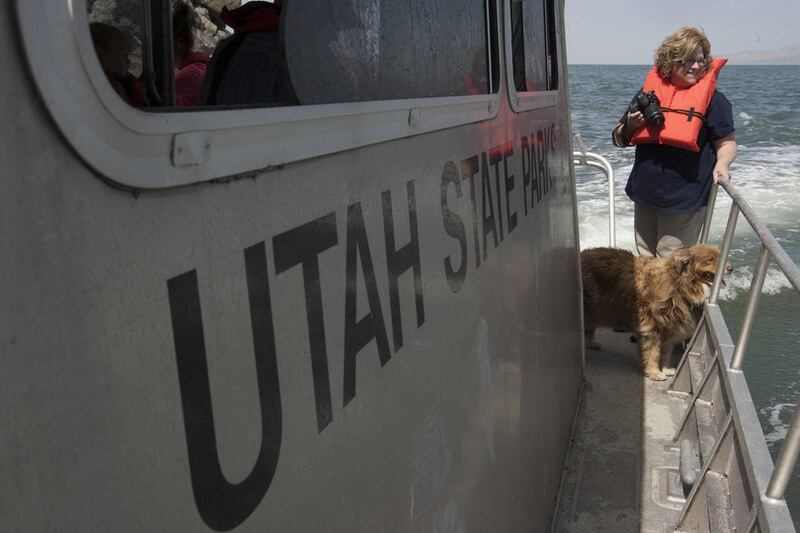GREAT SALT LAKE STATE PARK — On this Friday morning the wind is a faint whisper, and for a time, the Great Salt Lake is calm and gently rolling.
As time passes, however, the lake that some call "America's Dead Sea" demonstrates her fickle nature, rollicking with moderate breakers that would please any sailor's heart.
It is this changing landscape of the Western Hemisphere's largest salt water lake that Utah state park managers want to showcase, to help residents and visitors alike understand its unique allure.
"This is one of the wonders of the world," said Fred Hayes, director of the Utah Division of Parks and Recreation. Hayes recalled that visiting the lake as a child and playing in its salty water used to be a favorite pastime to while away the hours, but it's not so common anymore.
"We've kind of lost that. People just get to its edges and think it is a smelly place, but they don't get beyond that. That is what we want to change."
The parks division celebrated the grand opening Friday of a new visitors center at the Great Salt Lake State Park, a building that boasts a scenic deck with tables for viewing the ebbing waves and interpretive displays detailing the history of the Great Salt Lake. As part of the celebration, the public had a chance to come out for a free ride aboard one of the park's rescue boats, which Dave Shearer sliced through the 2-foot waves with ease, accompanied by first mate, Taz the dog.
For decades, the state park has been little more than an interstate exit for tour buses and visitors to get a closer look at the southern tip of the 75-mile-long lake. From here, visitors can see the western edges of the lake's mountainous Antelope Island and the expansive, rock-strewn beaches provide visitors with the best access to the lake in Salt Lake County.
Park manager Jeremy Shaw said tour buses hauling hundreds of thousands of people pop in, snap their photos and move on. Other visitors dawdle for awhile, but unless someone is launching their boat, there's been little incentive to linger.
"It's really just been a marina," Shearer said. "We really needed more offerings off the freeway."
About a year ago, Shaw found a way to change that due to his persistent curiosity over a dilapidated, abandoned building at 7200 West and Interstate 80. Ironically, the building once was a visitor information center for the Great Salt Lake and Utah tourism but had since fallen into disrepair, its windows shattered and its floor littered with ceiling tiles.
But where some might see ruin, Shaw saw promise.
"I saw that and I wanted it," Shaw said, smiling. "I thought it would be perfect. It looked like the price was right and it was roughly the right size for what we needed. The main motivator was I thought I could get that thing super cheap or free."
Shaw was able to sweet talk the building's owner out of the structure — they simply wanted it moved immediately — and convinced his bosses that the investment would be worth it.
Neighboring Kennecott, with its towering smelter across the interstate an ever present and commanding visual attraction, agreed to kick in $36,000. Shaw said the grant basically paid for the extreme makeover for the building, absent sewer and water.
"Kennecott came to the rescue to help us create something you have never seen here before," Shaw said at the opening. "I can't be happier with how things turned out. It was a really cool, cooperative effort between everybody."
The exterior of the building, which is about a mile west of Saltair, also features signage that describes the smelting process at Kennecott and details what visitors see from the park — the tallest structure west of the Mississippi and the world's cleanest smelter operation.
In addition to the gift shop that offers eclectic but appropriate souvenirs such as Utah Dead Sea Salts and snowflake ornaments crafted out of Great Salt Lake salt, the state park also added multiple overnight camping spots with full hook-ups available for $20 a night. There are kayak tours available, and a private concessionaire has plans to start a catered sunset cruise.
Hayes said the ultimate goal is to transform the park, and the lake's attractions, into a spectacular visitor experience that will help generate revenue for the division and build on Utah's diverse geologic attractions.
In the 2011-12 fiscal year, the division saw its funding slashed 59 percent on the heels of a scathing audit that recommended some parks for closure or possible privatization. Since then, the parks department has had to consolidate some operations and reduce its staffing to improve its bottom line.
With the threat of some parks targeted for closure and more cuts looming, Hayes' boss, state natural resources director Mike Styler, implored lawmakers to give his agency greater latitude to run the state's 43 parks more like a business. The new visitors center, Hayes said, is another step along that path.
"This will become a draw to get people off the freeway to come take a look, to stay and enjoy," Hayes said, adding that the division will put in an entry station to collect fees and install showers for people who want to swim.
"We will make this more of a business enterprise and give people more reasons to visit."
Email: amyjoi@deseretnews.com, Twitter: amyjoi16

